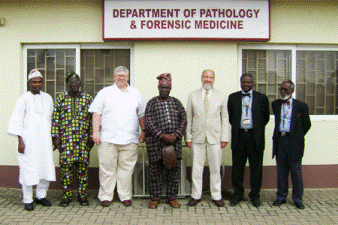Natural Resources, School of
Date of this Version
2006
Document Type
Article
Citation
American Scientist, Volume 94. pp. 254-261.
Abstract
As the object of my scientific study, I’ve chosen coprolites. It’s not a common choice, but to a paleonutritionist and archaeoparasitologist, a coprolite—a sample of ancient feces preserved by mineralization or simple drying—is a scientific bonanza. Analysis of coprolites can shed light on both the nutrition of and parasites found in prehistoric cultures. Dietary reconstructions from the analysis of coprolites can inform us about, for example, the origins of modern Native American diabetes. With regard to parasitology, coprolites hold information about the ancient emergence and spread of human infectious disease. Most sensational, however, is the recent role of coprolite analysis in debates about cannibalism.


Comments
© 2006 Sigma Xi, The Scientific Research Society. Reproduction with permission only. Contact perms@amsci.org.